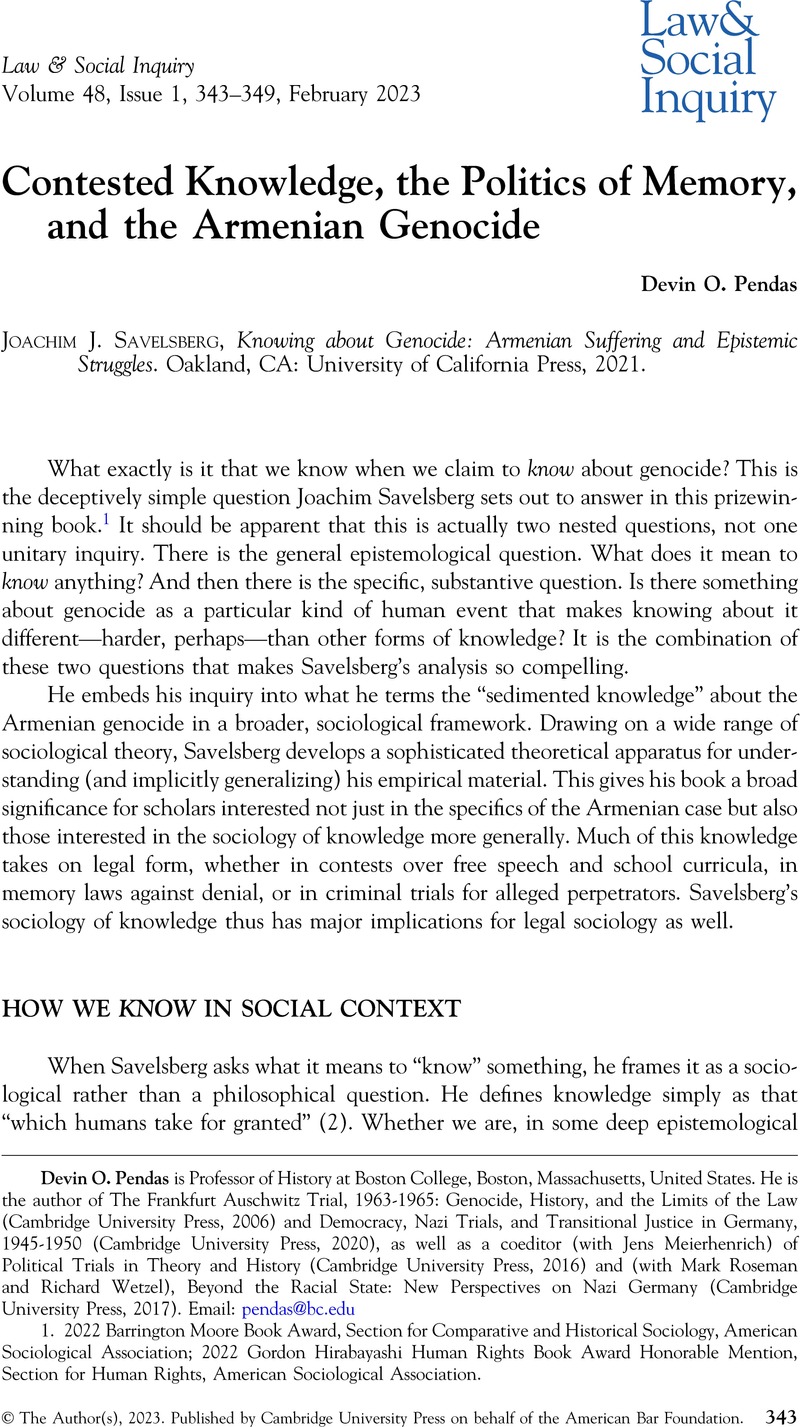No CrossRef data available.
Article contents
Contested Knowledge, the Politics of Memory, and the Armenian Genocide
Review products
Published online by Cambridge University Press: 06 January 2023
Abstract

- Type
- International Book Essays
- Information
- Copyright
- © The Author(s), 2023. Published by Cambridge University Press on behalf of the American Bar Foundation
Footnotes
He is the author of The Frankfurt Auschwitz Trial, 1963-1965: Genocide, History, and the Limits of the Law (Cambridge University Press, 2006) and Democracy, Nazi Trials, and Transitional Justice in Germany, 1945-1950 (Cambridge University Press, 2020), as well as a coeditor (with Jens Meierhenrich) of Political Trials in Theory and History (Cambridge University Press, 2016) and (with Mark Roseman and Richard Wetzel), Beyond the Racial State: New Perspectives on Nazi Germany (Cambridge University Press, 2017).


